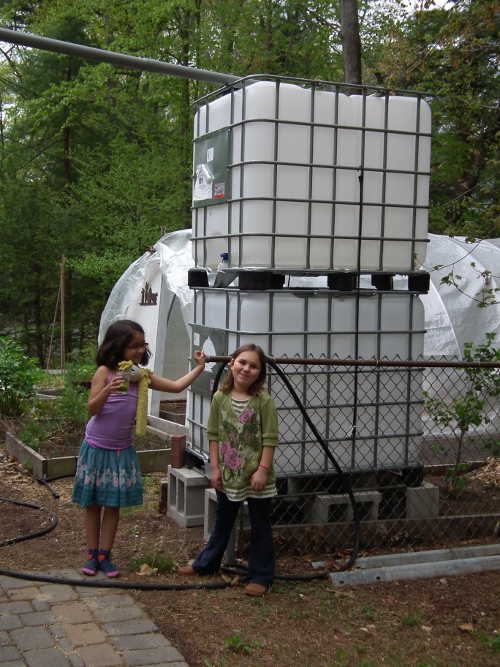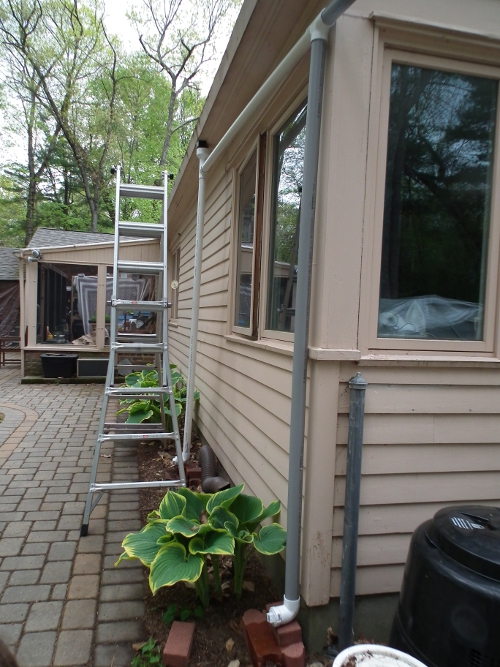Spring is supposed to be wet. Here in Wayland, Spring often means flooding in many basements and parts of town, sometimes even busy intersections and the public library. But until today it hadn’t rained for weeks. Drought is a relief from flooding and mud, true, but it brings fire hazard warnings, and having to  use tap water in the garden, which I intensely dislike because 1) it has chlorine in it, which isn’t good for the creatures in my carefully tended soil and 2) is costly, in so many ways.
That is why DH and I hurried to get our BIG WATER Â system installed. This is a system I’ve been coveting for years, now, and it finally came together. Part one is the rain water catchment.
275 gallon IBC totes with two seven-year-olds for scale
The rain comes off our biggest roof, first goes into to two first-flush pipes, which will hopefully catch the debris, dust and pollen, then moves on to the totes.
The top tote fills first, then overflows into the bottom one, which overflows into the bed behind it which has Elders and Lobelia, all moisture-loving plants. Â We’ll be using the top tote for our gravity-fed irrigation (which is why that is our primary tote: the higher up, the more pressure).
That’s part Two of BIG WATER. I put down the drip irrigation in a while ago. The garden still looks a little like a patient hooked up to life support what with all the tubes and hoses snaking all over the place. Once the top tote is full and we’ve connected it up to the irrigation, we can check for pressure and leaks. Then I’ll bury the tubing in the beds under straw and the pipes in the pipes in the wood chips.
Other news: 1) Success! After two nights and two days in the “broody buster,” Toothless the broody hen is no  longer broody. 2) The BEE talk went off spectacularly well. There were 35 people people of all generations above 14, mostly people I hadn’t personally invited (maybe I should stop inviting?). Many signed up indicating they wanted to start bees. 3) I got the news that we (Transition Wayland Foodshed Group) were given two 20’x30′ community garden plots for our grain experiments.  I went to scout them out this morning and they’re beautiful, permanent plots on high ground. They’ll need tilling, and then I have to decide what to plant, and then I get our volunteers lined up…


Leave a comment